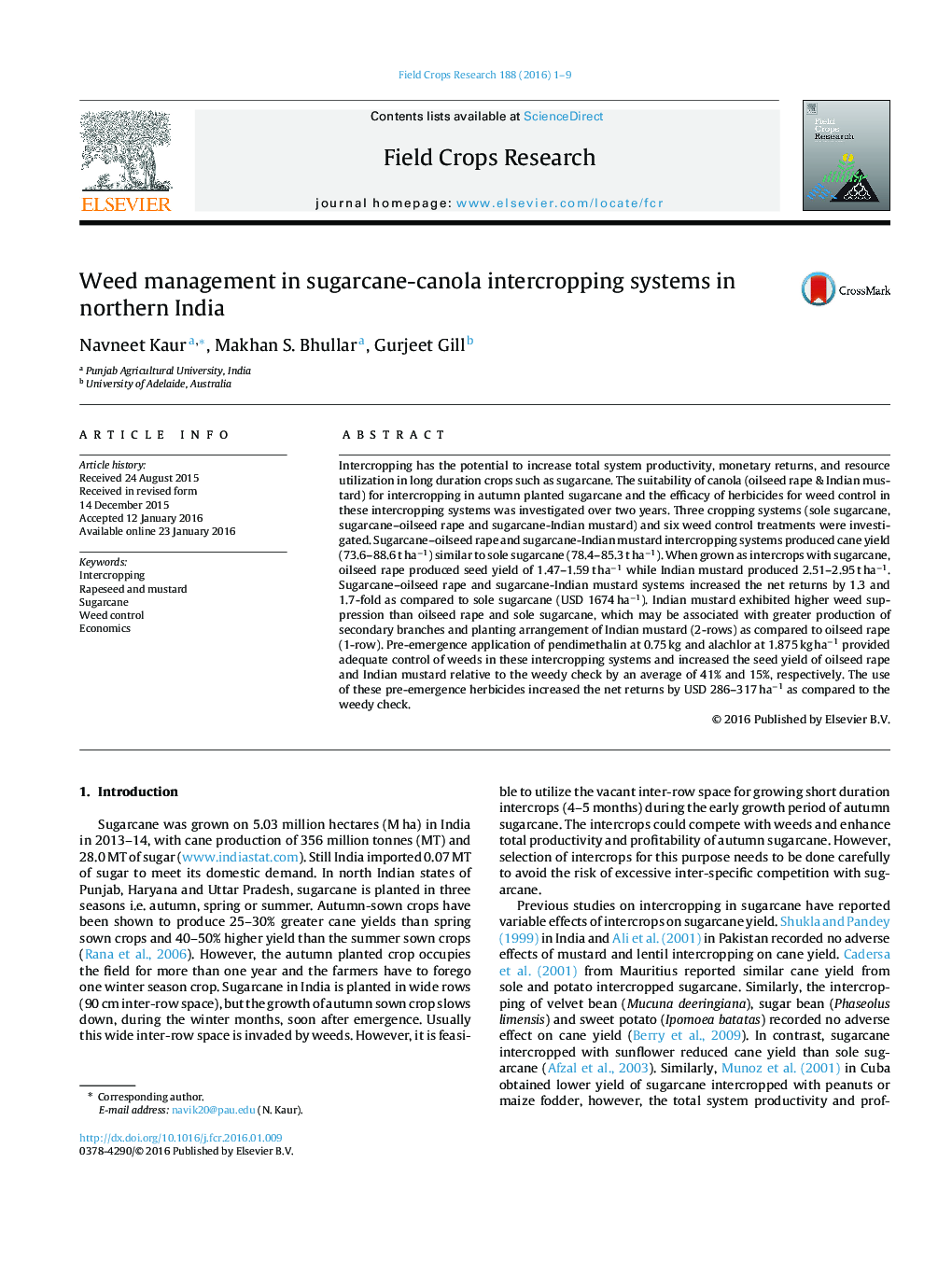| Article ID | Journal | Published Year | Pages | File Type |
|---|---|---|---|---|
| 4509841 | Field Crops Research | 2016 | 9 Pages |
•Sugarcane + Indian mustard/oilseed rape had no negative effect on cane yield.•Sugarcane + Indian mustard/oilseed rape increased the net returns than sole sugarcane.•Weed control with herbicides increased intercrops yield & profit than weedy check.
Intercropping has the potential to increase total system productivity, monetary returns, and resource utilization in long duration crops such as sugarcane. The suitability of canola (oilseed rape & Indian mustard) for intercropping in autumn planted sugarcane and the efficacy of herbicides for weed control in these intercropping systems was investigated over two years. Three cropping systems (sole sugarcane, sugarcane–oilseed rape and sugarcane-Indian mustard) and six weed control treatments were investigated. Sugarcane–oilseed rape and sugarcane-Indian mustard intercropping systems produced cane yield (73.6–88.6 t ha−1) similar to sole sugarcane (78.4–85.3 t ha−1). When grown as intercrops with sugarcane, oilseed rape produced seed yield of 1.47–1.59 t ha−1 while Indian mustard produced 2.51–2.95 t ha−1. Sugarcane–oilseed rape and sugarcane-Indian mustard systems increased the net returns by 1.3 and 1.7-fold as compared to sole sugarcane (USD 1674 ha−1). Indian mustard exhibited higher weed suppression than oilseed rape and sole sugarcane, which may be associated with greater production of secondary branches and planting arrangement of Indian mustard (2-rows) as compared to oilseed rape (1-row). Pre-emergence application of pendimethalin at 0.75 kg and alachlor at 1.875 kg ha−1 provided adequate control of weeds in these intercropping systems and increased the seed yield of oilseed rape and Indian mustard relative to the weedy check by an average of 41% and 15%, respectively. The use of these pre-emergence herbicides increased the net returns by USD 286–317 ha−1 as compared to the weedy check.
